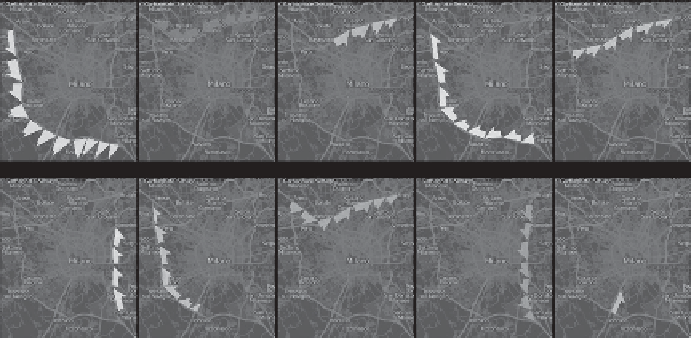Database Reference
In-Depth Information
10 largest clusters of the anonymized trajectories
12 (73)
4
4 (41)
5
37 (38)
??
21 (34)
2
40 (31)
7
23 (30)
6
132 (30)
??
27 (29)
3
6 (26)
10
30 (24)
15
Figure 9.7 Ten largest clusters of the anonymized trajectories.
measures. Here, the recall measures how the cohesion of a cluster is preserved:
it is one if the whole original cluster is mapped into a single anonymized
cluster, and it tends to zero if the original elements are scattered among several
anonymized clusters. The precision measures how the singularity of a cluster is
mapped into the anonymized version: if the anonymized cluster contains only
elements corresponding to the original cluster its value is one, otherwise the
value tends to zero if there are other elements corresponding to other clusters.
The contamination of an anonymized cluster may depend on two factors: (1)
there are elements corresponding to other original clusters, or (2) there are
elements that were formerly noise and have been promoted to members of an
anonymized cluster.
The immediate visual perception that the resulting clusters are very similar
in the two cases in Figures
9.6
and
9.7
is also confirmed by various cluster
comparisons by F-measure, redefined for clustering comparison (Figure
9.8
).
The conclusion is that in the illustrated process the desired quality of the
analytical results can be achieved in a privacy-preserving setting with concrete
formal safeguards and the protection with respect to the linkage attack can be
measured.
9.4.2 Trajectory Anonymity by Microaggregation and Perturbation
The previous technique is not suitable when it is necessary to obtain anonymous
data preserving real locations in the data. When this requirement has to be satis-
fied it is possible to use the anonymization methods called
SwapLocations
and
ReachLocations
, which allow anonymizing trajectories composed of original
locations.

